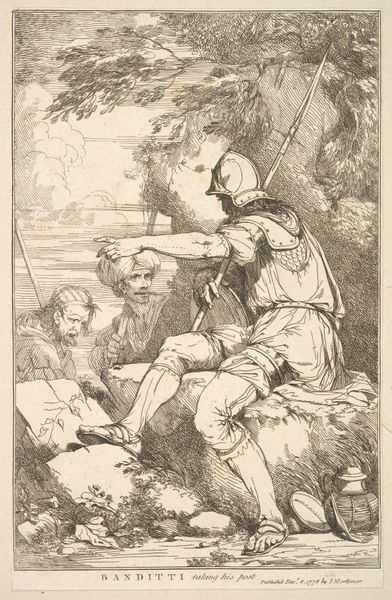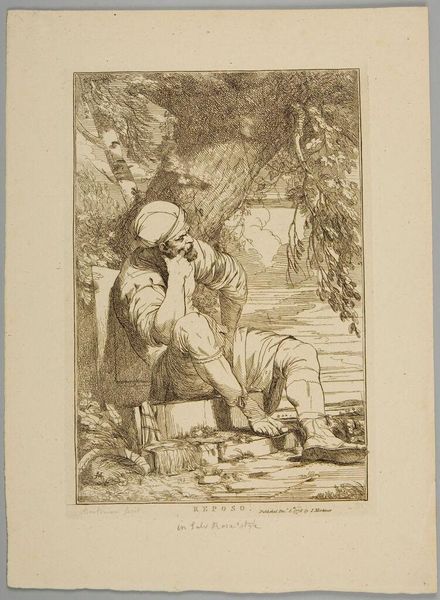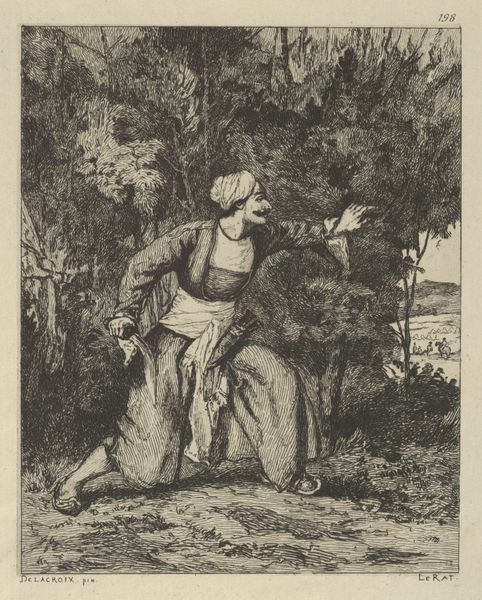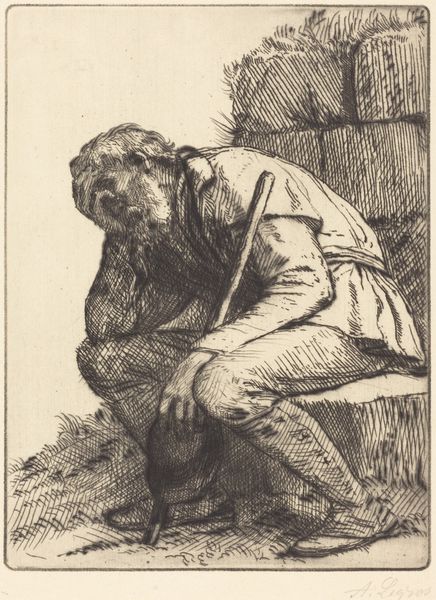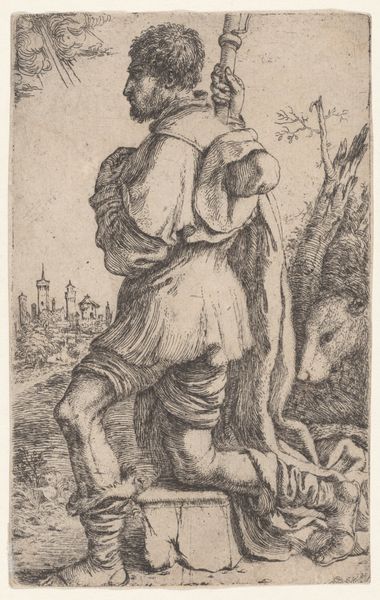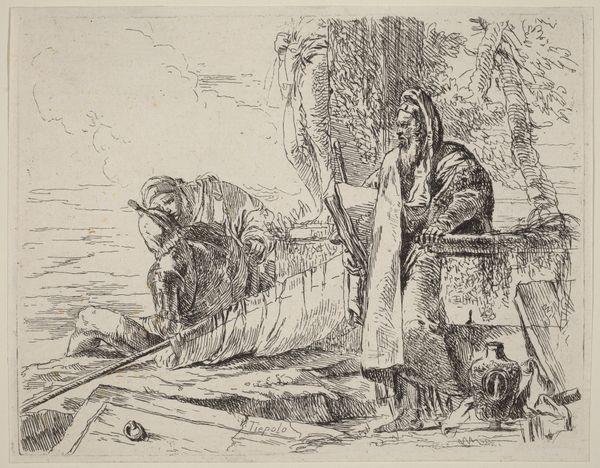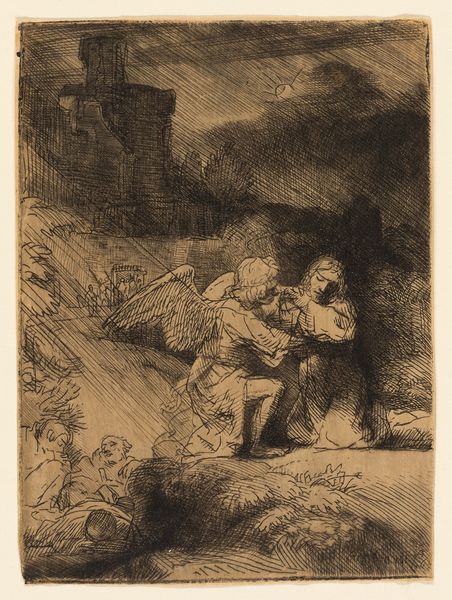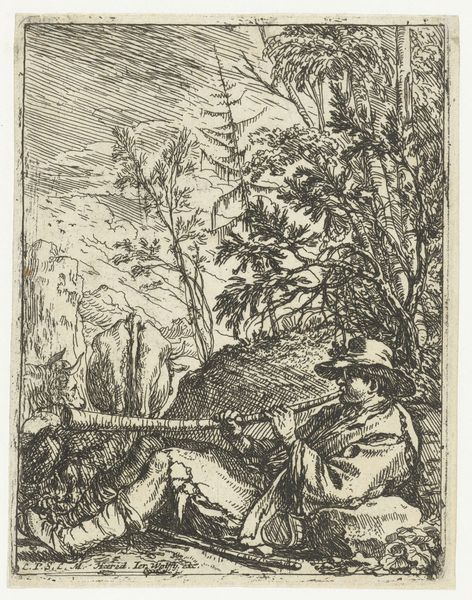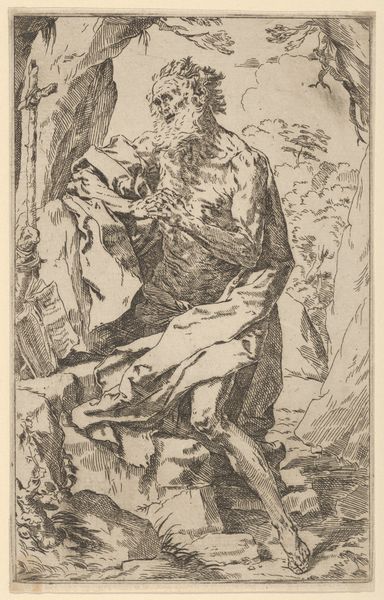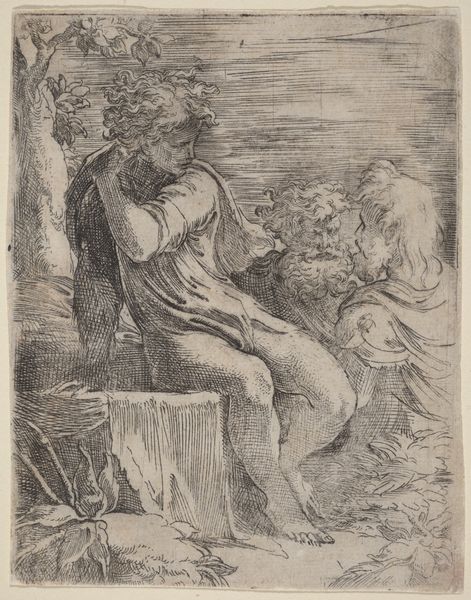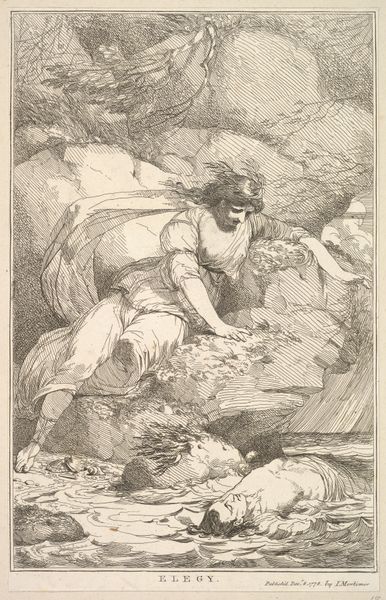
Dimensions: plate: 30 × 20.2 cm (11 13/16 × 7 15/16 in.) sheet: 42 × 29 cm (16 9/16 × 11 7/16 in.)
Copyright: National Gallery of Art: CC0 1.0
Curator: First impressions: solitude, stillness, a whisper of the epic caught in a tiny frame. Editor: We're looking at "Reposo," an etching and engraving by John Hamilton Mortimer, published in 1778. It's quite striking, a study in contemplation. Curator: "Reposo" - rest, repose. Exactly. But it feels more like a pregnant pause, doesn’t it? The figure's position, that hand propping his chin…he's not simply resting; he's wrestling with something. Editor: Mortimer often explored historical and dramatic themes. I see a man in what looks like Ottoman dress, perhaps a soldier or a scholar, lost in thought by a body of water. There is definitely a narrative element, even though it's a quiet scene. He's alone but seems ready for history. Curator: Absolutely, he could be Telemachus waiting for Ulysses! Or anyone burdened by the past. The landscape contributes so much; there's something ancient and wild in those trees, yet also so intimate. I am getting the distinct impression he may not like his historical circumstances. Editor: And that’s something Mortimer did so well, blending the classical with Romantic sensibilities. It would have appealed to the era's fascination with the sublime and the individual's place within a vast and often chaotic world. Consider the vogue for history painting at the time, as well as increased interest in representing landscape, particularly how it could elicit mood. Curator: You can almost hear the gears turning in his mind! It makes me think of my own mental "reposo"—those moments where you are trying to force thoughts that simply don't want to be forced! He’s completely trapped by his mind in a beautifully picturesque manner. Editor: Right. The way Mortimer uses line, especially in the rendering of the figure's clothing, gives such texture. Notice also how the setting itself reinforces the solitude of the moment. Curator: I find myself feeling sympathy for him; maybe because the piece encourages me to consider my burdens. What about you, are your historical narratives catching up to you here? Editor: I can only admire Mortimer’s skillful engraving work. What seemed intimate also tells us of how visual forms themselves become stages for the great historical and intellectual themes of the 18th Century. I will certainly pause to contemplate a good history painting.
Comments
No comments
Be the first to comment and join the conversation on the ultimate creative platform.
